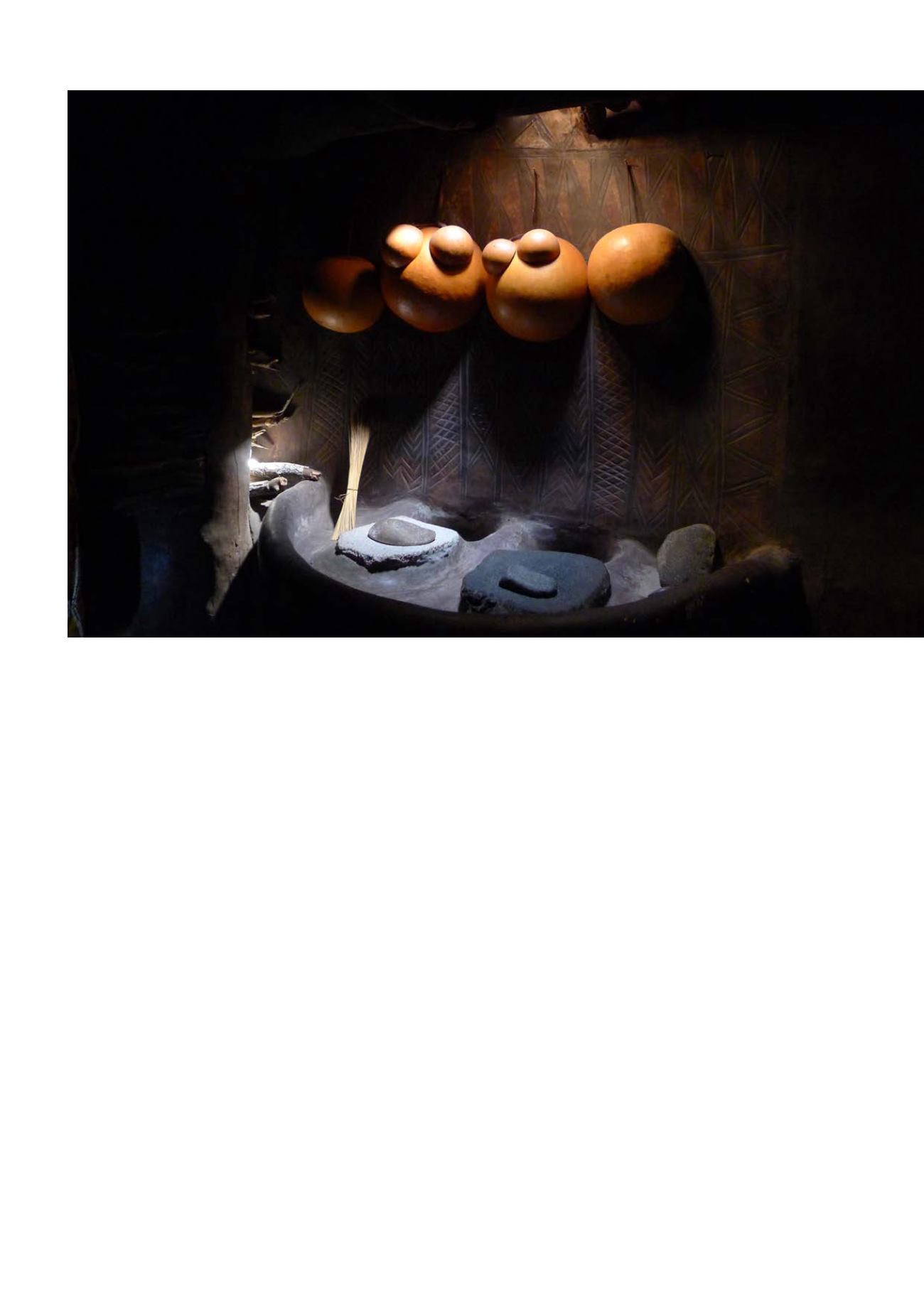
B
urkina Faso is a land-locked coun-
try in West Africa of about 274,200
square kilometres (105,900 sq mi)
in size. It is surrounded by six coun-
tries: Mali to the north; Niger to the
east; Benin to the southeast; Togo
and Ghana to the south; and Ivory
Coast to the southwest. Its capital is
Ouagadougou. As of 2014, its popula-
tion was estimated at just over 17.3
million.
Formerly called the Republic of Upper
Volta, the country was renamed
"Burkina Faso" on August 4, 1984 by
then-President Thomas Sankara. It
means the country of honourable
people. Citizens of Burkina Faso are
known as Burkinabè. French is the
country’s official language.
Before the conquest of what is now
Burkina Faso by the French and other
colonial powers during the late 19th
century, the country was ruled by
various ethnic groups including the
Mossi kingdom. After gaining inde-
pendence from France in 1960, the
country underwent many changes in
governance structure. Today, it is a
semi-presidential republic.
Culture
Many of the country's ethnic groups
have their own hierarchies. The Mossi
group differentiates between aristo-
crats (Nakomse), commoners (Talse),
and slaves or captives (Yemse). The
Nakomse are people of power whose
ancestors were horse-riding warriors
and founders of the Mossi kingdoms.
They were not necessarily rich in a
materialistic sense, but they controlled
people. They had many followers and
they took slaves, who were integrat-
ed into their families. The offspring of
these slaves can hardly be differen-
tiated from other people, yet their
slave origin may still be remembered.
Other groups also differentiate a fam-
ily's slave origin; most obvious is the
demarcation between nobles and
slaves in the extreme north among the
Tuareg.
Apart from class stratification, individu-
als are also categorized by occupa-
tion. In the west, which is influenced
by Mande tradition, blacksmiths and
praise singers (Griots) form caste-like
groups (Nymakallaw) and are some-
times feared for their occult pow-
ers? There are also groups of traders,
the Dyula in the west and the Yarse
among the Mossi, who are generally
respected.
Social and material inequal-
ity increased dramatically during the
1990s. Equality was one of the main
principles during Sankara's time; flashy
cars were confiscated and even high
state officials had to work on farms
and participate in the daybreak mass
sports.
Ouagadougou, the capital of Burkina
Faso is a major hub of activity for
those involved in African cinema,
and hosts a Pan-African film festival
every 2 years called FESPACO, the
Pan-African film and television Festival
of Ouagadougou, which is a world-
renowned affair. Idrissa Ouedraogo,
probably the most commercially suc-
cessful African director, is from Burkina
Faso.
Culture and art are further displayed
at Laongo, an area of exposed gran-
ites where artists from the entire world
are invited to sculpt on rocks.
July - September 2015 •
The Lion King
• 27
Calabash collection in the cooking area of the Tiebele Royal Court. Tiebele is noted for its series of mud-brick structures covered with geometric patterns in
natural clay paints. It is often referred to as the village where every house is a work of art.
Burkina Faso |
Country Focus
Photo by Carsten ten Brink


